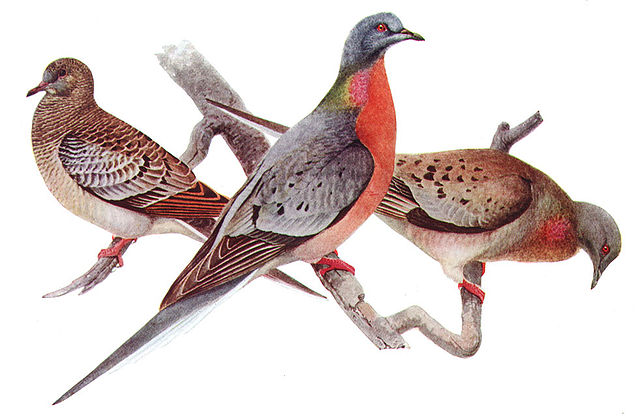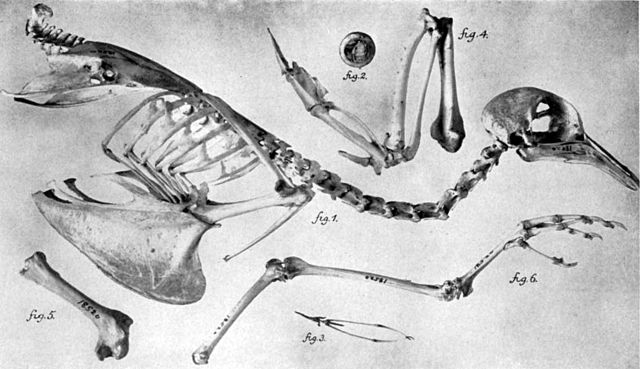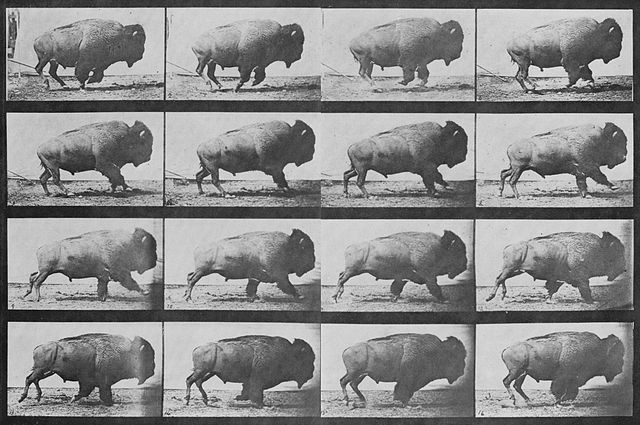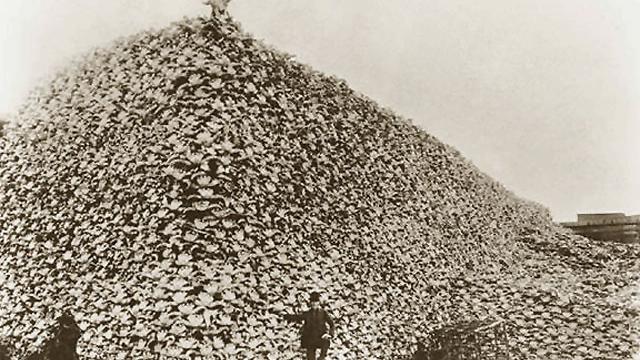The advent of the railroad collapsed our notions of time and space, and it carved out entire industries whole — we of the 21st century have only the internet for comparison. It also swallowed entire species: The story of how railroads drove the passenger pigeon to extinction — and bison to the brink of it — is a story of how a technological system can radically transform an entire landscape in just a few years.
To someone living in 1800, the decimation of passenger pigeons and bison would have seemed impossible. There were so many. Billions of passenger pigeons blotted out the sky for days during their migration. Millions of buffalo rumbled like thunder across the plains. But in 1914, the last passenger pigeon, Martha, died in a zoo, and only a few hundred bison remained in the world.
How did we get there? Let’s start with the passenger pigeon, whose demise did, at least, spark the conservation movement that helped spare the bison of the same fate.
Passenger pigeons and the refrigerator car

Illustration from Birds of New York via Wikimedia Commons
If only passenger pigeons weren’t so tasty.
In the early days, you could point a rifle in the sky — and without even aiming — take down birds for dinner. Before the railroad, this happened locally and on a relatively small scale.
But as railroads crisscrossed the country, the nesting sites of passenger pigeons were connected to the markets of the east. Hunters could ride out hundreds of miles to where pigeons lived and, more importantly, send the dead birds back in refrigerator cars. A whole industry sprung up to feed the hungry cities: Boxcars with tens of thousands of birds made their way to the market. “This meant that rural migrants to growing cities could still get wild game, and the well-heeled could eat Ballotine of Squab à la Madison, served by a new class of restaurant, like Delmonico’s, in New York, where fine dining was becoming a feature of urban life,” writes Jonathan Rosen reviewing the recent book A Feathered River Across the Sky in The New Yorker.
It all worked great for a few short decades — for the humans, at least, if not the pigeons. Since the birds were so easy to kill, a professional hunter could take out 5000 a day by himself. But of course, this could not last. Other factors, like the destruction of pigeon habitats, contributed too, but the rise of industries alongside the railroad were a major factor in reducing their numbers from billions to zero.

Passenger pigeon skeleton by RW Shufeldt via Wikimedia Commons
Bison and “hunting by rail”
Bison hunters also came with the trains. During the construction of the transcontinental railroad, hired hunters like William “Buffalo Bill” Cody supplied railroad workers with buffalo meat. Cody himself killed 4280 animals in 18 months under contract with the Kansas Pacific Railway. As anyone who’s played Oregon Trail would know, the slow, hulking creatures are all too easy to shoot.
And after the railroads were completed, they brought the hunters who killed for sport — without even stepping off the train. “Massive hunting parties began to arrive in the West by train, with thousands of men packing .50 calibre rifles, and leaving a trail of buffalo carnage in their wake,” Gilbert King writes in Smithsonian Magazine. “The railroads began to advertise excursions for ‘hunting by rail,’ where trains encountered massive herds alongside or crossing the tracks. Hundreds of men aboard the trains climbed to the roofs and took aim, or fired from their windows, leaving countless 1,500-pound animals where they died.”

Eadweard Muybridge’s photos of a buffalo galloping via Wikimedia Commons
Coda
By the late 1800s, it was already clear something was wrong. The swift decline of passenger pigeons was of the first signs that America was not infinite — that we couldn’t keep expanding west and taking from the land forever. A few hundred buffalo still remained, and a conservation movement took hold to save them. Parks and preserves like Yellowstone gave buffalo a respite from hunters. Today, they number in the hundreds of thousands.
It’s worth tracing the devastation of passenger pigeons and bison by railroad because they give a sense how a technological system transforms everything in its path — even the things you would not have predicted. Alongside the trains, new markets like refrigerated pigeon meat and bison hunting expeditions sprung up.
Like the railroad of the 19th century, the internet touches nearly every corner of our lives today. It’s still affecting conservation, too: Poachers can now log on and read scientific reports of discovery that lead them to rare, new species. Our world is vastly connected one, and our technologies are making it even more so. [The New Yorker – Smithsonian Magazine]
Top photo of bison skulls via Wikimedia Commons
